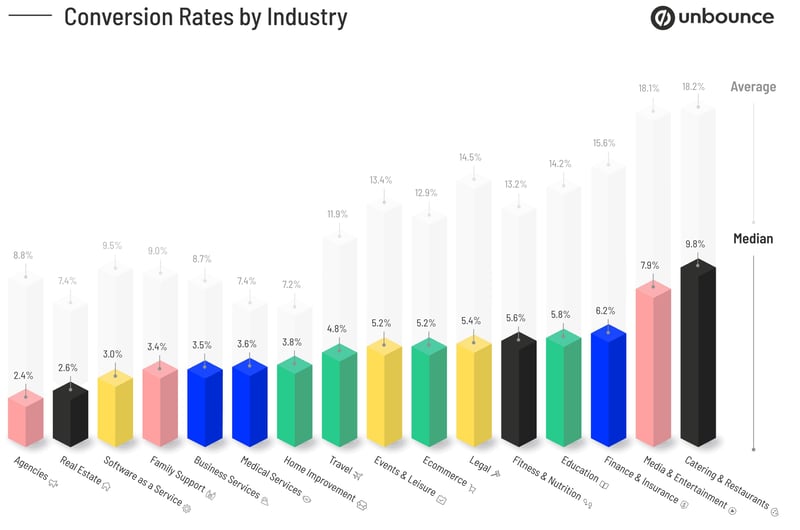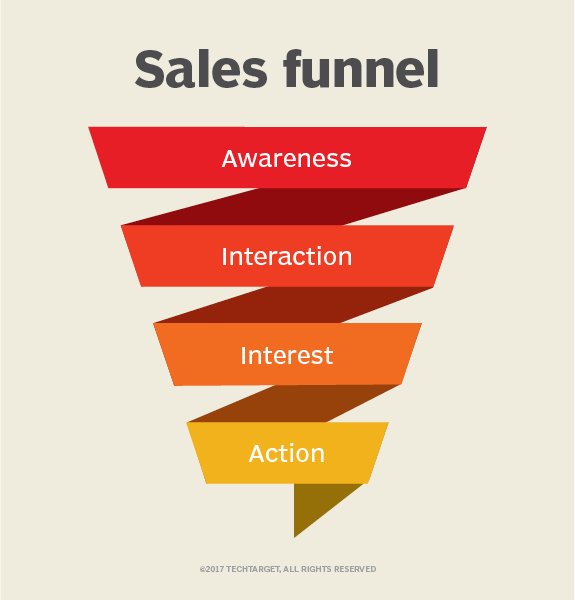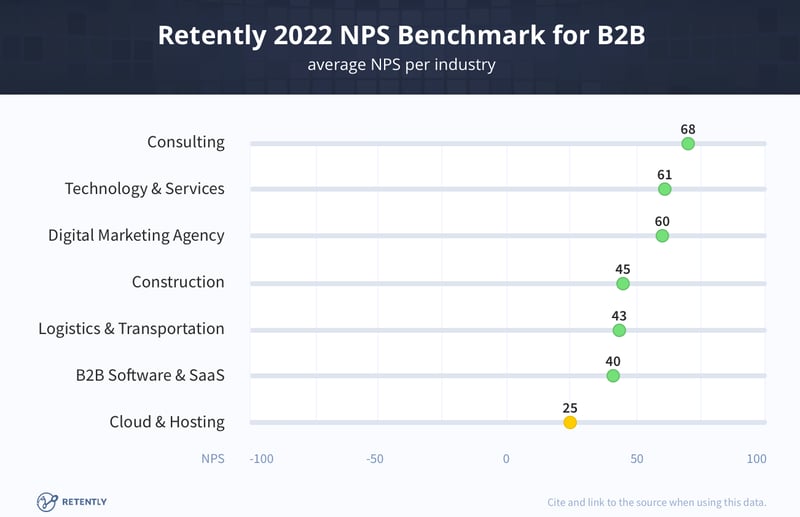
14 Examples of Sales KPIs Every Manager Should Measure
 Updated on
Updated on
 By Carlos Correa
By Carlos Correa
Carlos Correa
Carlos has been involved in the sales space for well over ten years. He began in the insurance space as an individual sales agent, managing teams as s...
learn more
Carlos Correa
Carlos has been involved in the sales space for well over ten years. He began in the insurance space as an individual sales agent, managing teams as s...
Table of Contents
Table of Contents
Picture this: there's one week left before the quarter close, and your executive suite wants to know:
"Are we going to hit our sales target?"
If the answer is no, then more difficult questions follow:
- "Shouldn't we have seen this coming?"
- "Did we not log enough sales activities?"
- "Are our leads poor quality, or are we not closing well?"
If you were tracking the proper sales KPIs, the warning signs would have flashed weeks ago.
But without any guide posts, you're lost on the trail without a map.
That's why measuring the right sales KPIs is a must for every manager.
There's a dizzying amount of sales metrics to consider, but we're here to light the path and have boiled down 14 examples of sales KPIs you simply have to measure.
Follow along if you want to hit your quota, manage your team well, and invest your marketing and sales dollars wisely.
SaaS Sales Metrics vs. Sales KPIs
Before diving into our favorite metrics, here's a quick word about sales KPIs for software businesses in particular. Software-as-a-Service or SaaS companies have unique pricing dynamics and business models that require them to track specific KPIs that aren't relevant to other companies. Sales KPIs, as a general concept, are applicable to any business model.
But with SaaS, you're quickly swimming in a pool of never-ending acronyms and jargon such as:
- ARR: annual recurring revenue
- ARPU: average revenue per user
- LTV: lifetime value
- CAC: customer acquisition cost
Ringy knows how to keep the sales machine humming for any business but also knows the world of SaaS inside and out.
We'll make sure to cover the nuances of certain SaaS metrics while using as few acronyms as possible.
Why is KPI Customer Relationship Management Important?
In order to leverage sales KPIs to drive your business forward, there are two integral questions to answer first:
- How do I obtain and measure the right data?
- How do I take action and make improvements using that data?
The answer lies in your customer relationship management tool.
In order to measure sales KPIs and take business actions based on data, it's crucial to leverage a CRM system.
A CRM not only tracks the data necessary to measure KPIs for sales departments but also allows you to change directions based on the health of those metrics.
By using a specialized sales CRM like Ringy, you'll have transparent, accurate, and actionable insights all in one easy-to-use tool.
How to Choose the Right KPIs
The key to effective sales measurement lies in selecting the right sales KPIs. Here's a framework to guide your selection:
- SMART KPIs: Ensure your chosen KPIs are Specific, Measurable, Achievable, Relevant, and Timely (SMART). Specificity keeps the focus clear, while measurability allows you to track progress. Achievable goals keep motivation high, and relevance ensures the KPIs align with your overall sales strategy. Finally, timeliness guarantees you have up-to-date data to make informed decisions.
- Less is More: Don't get bogged down by tracking too many KPIs. Choose a handful of the most impactful ones that truly reflect your sales goals. This will allow for a clearer focus and simplify the analysis process.
Leading and Lagging Indicators in Sales
Sales KPIs can be categorized into two main types: leading indicators and lagging indicators. Understanding the distinction is crucial for a well-rounded view of your sales performance.
Here's a table for a quick comparison:
|
Feature |
Leading Indicators |
Lagging Indicators |
|
Focus |
Activities and behaviors that predict future performance |
Outcomes and results of past sales efforts |
|
Examples |
Number of sales calls made, conversion rates at different stages of the sales funnel, lead generation rate |
Sales revenue, customer acquisition cost, customer lifetime value |
As you've seen, leading indicators provide insights into the health of your sales pipeline. By tracking activities like the number of qualified leads generated or the conversion rate from lead to customer, you can anticipate future sales performance.
Lagging indicators, on the other hand, reflect the past performance of your sales efforts. Metrics like sales revenue, customer churn rate, and customer lifetime value (CLV) paint a clear picture of the sales team's past achievements and areas for improvement.
6 Marketing and Sales KPIs to Track

There are countless sales and marketing metrics you can track across your business.
But as a busy sales manager or executive, you need to focus on what's most important.
The following 6 KPIs will give you the insights you need to drive more revenue for your business and keep you on top of your sales forecast at all times.
|
KPIs |
Description |
|
Average Length of Customer Sales Cycle |
Measures the average time it takes to convert a lead into a customer. |
|
MQL-to-Customer Conversion Rate |
Tracks the percentage of Marketing Qualified Leads (MQLs) that convert into paying customers. |
|
Volume of New Opportunities |
Indicates the number of new sales opportunities created within a specific timeframe. |
|
Percentage of Leads in Each Lifecycle Stage |
Monitors the distribution of leads across different stages of the sales funnel (e.g., awareness, interest, decision, action). |
|
Customer Lifetime Value (CLV) |
Estimates the total revenue a customer is expected to generate throughout their relationship with your business. |
|
Customer Acquisition Cost (CAC) |
Calculates the average cost of acquiring a new customer. |
1. Average Length of Customer Sales Cycle
How long does it take you to sell?
While this might seem like the simplest of questions, the answer is often complicated.
For example, did you know new customers can take anywhere from 4 to 7 months to close in B2B sales?
That means a lead today might not turn into revenue until next quarter.
When the fruit of your labor isn't harvested until much later it's impossible to build an accurate forecast without tracking sales timelines.
Measuring sales cycles help marketing and sales managers understand when they need to make investments and how long those investments will take to pay off.
2. MQL-to-Customer Conversion Rate
Okay, so you know how long it takes to go from lead to customer.
Now comes the question – how many leads will you need to work to find that customer?
Tracking your MQL-to-Customer conversion rate is essential if you want to understand how efficient your marketing and sales funnel is.
One caveat, though… conversion rates vary widely by industry.
3 customers for every 100 leads might mean a broken sales process for one business or an all-star sales team for another.

Want to know where your team stands? Start tracking your customer conversion rates and look for areas of improvement throughout the sales cycle.
3. Volume of New Opportunities
This metric is all about your pipeline.
How many sales opportunities (and how much value) does the business have in the hopper? While every lead is unlikely to close with a sale, the volume of open opportunities is a clear leading indicator of success.
A CRM tool is the easiest way to visualize your sales pipeline and generate reports for other business leaders to consume.
4. Percentage of Leads in Each Lifecycle Stage
Each business tracks the lifecycle of a sales opportunity uniquely. Your business might capture 4 stages while a competitor delineates 7 for the same product offering.
A simple sales cycle might move leads through stages such as:
- Qualifying
- Negotiating
- Proposing
- Closing
But whatever the definition, these stages mirror the progressive steps a client takes as they move through the sales funnel from awareness to action.

As a funnel suggests, customers will fall out of your sales process at each stage, normally, with fewer and fewer leads converting as the stages progress.
Combining your knowledge of conversion rates with the percentage of opportunities in each stage gives you the best view into future sales.
Also, knowing where potential customers fall out of the sales process helps you optimize your sales funnel to increase conversion rates at each stage and increase the effectiveness of your entire process.
5. Customer Lifetime Value (CLV)
Let's say your sales team crushed it and brought loads of new customers through the door.
One way to measure the value of your success is to track the revenue associated with these sales, but the true value is more nuanced.
That's because customers (hopefully!) don't interact with your business just once.
If you're a SaaS business with monthly recurring subscriptions – you hope they'll be a happy subscriber for years to come. Or if you're a product-based business – you hope the customer will buy complementary offerings further down the line.
The value of a customer doesn't end with the sale; it begins.
Customer Lifetime Value is the best metric to track to understand the full value of each sale and to make intelligent decisions in other parts of the business, such as how much to spend to acquire that customer in the first place.
6. Customer Acquisition Cost (CAC)
In contrast to CLV is Customer Acquisition Cost, commonly referred to as CAC.
CAC measures the marketing and sales investments needed to acquire a typical customer and covers both direct marketing expenses that are easily attributable to one sale as well as sales and marketing investments such as personnel that are shared across opportunities.
By measuring CAC in this broad sense, a business can more accurately understand how expensive it is to close a new customer.
CAC is a crucial barometer of business health but more on that later…
With these 6 sales and marketing KPIs, you are armed with everything you need to understand how sales are progressing currently and to build accurate forecasts for the future.
4 Sales Team KPIs to Track

Business is a team sport driven by the collective actions of each individual.
The company can't crush its sales objectives without each member of the sales team firing on all cylinders. Successful sales reps need to be empowered with the right information and be given appropriate goals.
Here are our 4 favorite KPIs to track and share with your team if you want to build a productive sales department.
|
Sales Team KPIs |
Description |
|
Sales Quotas Per Rep |
Specific sales targets assigned to each individual salesperson within a given timeframe. |
|
Calls or Emails Sent |
Measures the volume of outbound communication initiated by sales reps to engage with potential customers. |
|
Opportunities Created |
Tracks the number of new sales prospects identified and qualified by sales reps. |
|
Win Rate |
Represents the percentage of sales opportunities that convert into closed deals. |
1. Sales Quotas Per Rep
Each salesperson needs a target or quota to reach towards. But an unreasonable goal can be just as destructive and demotivating as no goal at all.
Sales Quotas per Rep is the best KPI for goal-setting purposes at the individual level.
This KPI can also help you think through how to allocate territories or named accounts fairly.
For example, the salesperson covering New York City should have a higher target than those covering Des Moines.
This metric will help you assign achievable sales goals that motivate your team to stretch for greatness.
2. Calls or Emails Sent
We get it. The ultimate goal is to drive new sales.
But sales are simply an output of a series of preceding actions.
If you want more sales out of the end of your funnel, you need to track activities that create leads at the top of your funnel.
That's why it's vital to track leading indicators of success such as:
- Outbound calls
- Outbound email KPIs
- Outbound text messages
- Meetings held
- Demos given
A good CRM will not only facilitate these client interactions but also track the number and type of activities by a sales rep for you.
3. Opportunities Created
Earlier, we talked about the pipeline for a business as a whole. But equally important is to track the pipeline for each salesperson.
By tracking opportunities at the rep level, you can measure the productivity of each team member and help improve those who are falling behind.
4. Win Rate
Here's where the rubber meets the road…
Do your sales reps actually know how to close a sale?
Win Rate is a simple metric that measures the degree of success each team member has at winning sales engagements. Normally it's calculated as the number of won sales opportunities over the total number of closed (won and lost) sales opportunities.
Further tracking Win Rate by product or type of sale can also help you manage your team.
Maybe one person is amazing at upselling existing customers, while another is better at new logo sales. By measuring win rate, you can take action to align your sales team and help individuals improve when they are below their potential.
4 KPIs for Sales Managers

As a sales manager, you may want to track high-level KPIs that aid in planning and forecasting processes related to headcount and growth targets.
You may also want to understand the value proposition of your product or service in relation to the marketplace or specific competitors.
Here are 5 of the best KPIs you can use to understand how your business and offers are positioned relative to the market.
|
KPIs for Sales Managers |
Descriptions |
|
Employee Satisfaction |
Measures the level of happiness and engagement of sales team members. |
|
NPS Scores (Net Promoter Score) |
Gauges customer loyalty and willingness to recommend your product or service to others. |
|
Upsell and Cross-Sell Rates |
Tracks the success rate of sales reps in selling additional products or services to existing customers. |
|
Retention Rates |
Indicates the percentage of customers who continue to do business with your company over a specific period. |
1. Employee Satisfaction
Happy employees are more engaged, and happy sales teams sell more. That's why employee satisfaction is completely aligned with the business's success.
There are many simple and effective ways to keep your sales team motivated. You must figure out what works for your team and your business.
But to know whether your management practices have the intended effect, you need to measure employee satisfaction over time.
Consider conducting a routine employee satisfaction survey so you can track how employees feel about the company and their responsibilities over time.
2. NPS Scores
Happy customers are the tell-tale sign of a healthy business.
When you can get current customers to sell on your behalf through positive word of mouth, sales and marketing expenses fall while revenue keeps rising.
Word of mouth is undeniably important to your business because consumers are 90% more likely to purchase a service or product when it is recommended by a friend.
A simple way to measure and track the public perception of your business is to leverage Net Promoter Scores.
NPS scores vary by industry, so consider where your business falls versus peers and track whether scores improve over time.

3. Upsell and Cross-Sell Rates
A good sales function doesn't just focus on selling to new customers but also figures out how to serve the same clients in more than one way.
The likelihood of customers upgrading to a premium version of your offering or purchasing a complementary offering is an important indicator of success.
By measuring Upsell and Cross-sell rates you can hone in on opportunities to expand the share of wallet that your business captures.
4. Retention Rates
Retention is one of the most important determinants of how big your business will grow in the long run.
If customers churn at a high rate, even the best sales function will face an uphill battle to grow revenue.
If you don't want your business to be a leaky bucket, you must track how well you retain clients diligently.
Retention rates can also give you insights into things beyond your sales process, such as your customer success or onboarding function.
While retention rates vary by industry, here are some good rules of thumb to consider for your business:
|
Industry |
Average Retention Rates |
|
Media |
84% |
|
Insurance |
83% |
|
Healthcare |
77% |
|
Information Technology |
77% |
Top Marketing and Sales KPIs

If you could only pick two sales and marketing metrics to use to drive business decisions, Customer Lifetime Value (also referred to as LTV) and Customer Acquisition Cost (CAC) would be the holy grail.
The relationship between what a customer is worth to your business and what it costs your business to acquire that customer dictates long-term profitability and exposes what parts of the sales and marketing machine are or aren't working.
There are generally accepted guidelines for the optimal relationship between LTV and CAC, especially in SaaS businesses.
Where does your business currently fall, and what does that say about your sales and marketing practices?
|
LTV-CAC Ratio |
What it Says About the Business |
|
1:1 |
Unhealthy: It costs just as much to acquire a customer as the value the customer will bring to your business. Profitability will be negative after considering things like overhead. |
|
3:1 |
Healthy: A 3x LTV to CAC ratio is the industry benchmark for a well-functioning sales and marketing motion. This suggests the company is spending wisely to acquire customers and will be profitable long term. |
|
5:1 |
Too Healthy: The relationship between LTV and CAC can actually be too good. A very high ratio suggests that a company is not spending enough on sales and marketing and leaving customers (and money) on the table. At this level, the business should not be counting profits but instead leaning into growth. |
Top Sales Executive KPIs
We've outlined 14 of the best sales and marketing KPIs to measure, and we're just scratching the surface.
If you're a busy sales executive who doesn't have time to get lost in a report with every data point under the sun, here are our suggestions for the few KPIs you absolutely can't do without.
|
Top KPI |
What it Measures |
Why It's a Must |
|
Pipeline |
Volume and value of open sales opportunities |
Since your pipeline is the maximum potential for sales, it will indicate when the sales function is falling behind targets. |
|
Win Rate |
Ability to convert sales opportunities to clients |
Win Rate gives you insight into which salespeople are succeeding and who needs help improving. Win Rates can also help you build an accurate forecast when combined with pipeline KPIs. |
|
Retention |
Ability to retain clients to continue to pay for your product or service |
High churn is the best indicator of problems in your product, sales process, or customer success function. In contrast, businesses that retain customers well will grow more quickly and scale more profitably. |
Learn From These Examples of Sales KPIs and Measure What Matters

Your business generates so many sales and so much marketing data that it can be overwhelming to track – our 14 examples of sales KPIs will pale in comparison.
This problem is only exacerbated by outdated systems and processes and information siloed in different departments and tools.
If you want to measure your sales and marketing KPIs in a way that allows you to make quick business decisions, you should use CRM software.
Ringy's platform helps you manage your sales and marketing KPIs simply so you can:
- Drive more sales
- Lower administrative costs
- Improve the return on your marketing investments.
Make the best business decisions by measuring what matters and signing up for a Ringy demo today!

Skyrocket your sales with the CRM that does it all.
Calling? Check. SMS? Check. Automation and AI? Check. Effortlessly keep in touch with your customers and boost your revenue without limits.

Take your sales to new heights with Ringy.
Sales in a slump? Ringy gives you the tools and flexibility you need to capture leads, engage with them, and turn them into customers.
Subscribe to Our Blog
Enter your email to get the latest updates sent straight to your inbox!
Categories
Related Articles




































































































